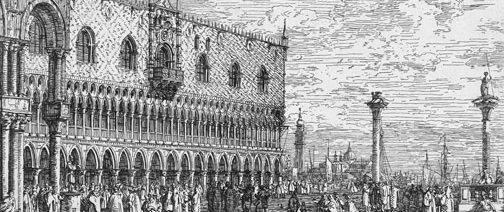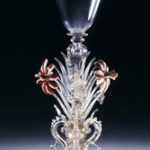By the 13th century Venice was famous for its glass. The Venetian lagoon was in prime position for international trade and had a monopoly on luxury glassware. The Venetian Republic guarded their technology by restricting the movements and freedoms of their craftsmen, confining them and their industry to the island of Murano.
Despite strict regulations, many Venetians did leave Murano. By the 16th century, lured by the promise of greater freedoms and emerging markets in new locations, Italians had settled in new glassmaking centres across Europe. Initially craftsmen moved to Antwerp, which was one of the most important ports on the European Continent.


Many glassblowers settled there and established glasshouses, unable to return to their homeland for fear of punishment. Some continued further North towards England, including the influential glassmaker Jean Carre in 1567 as well as Jacob Verzelini took over Carre’s glasshouse when he died in 1572. The Muranese had brought their skills and knowledge with them to these new destinations where they trained local people in their craft and made glass in the Venetian style, known as façon de venise. The glass made in these European locations was just as delicate and luxurious as the glass produced in Venice.
Back to Filigree Drinking Glasses



